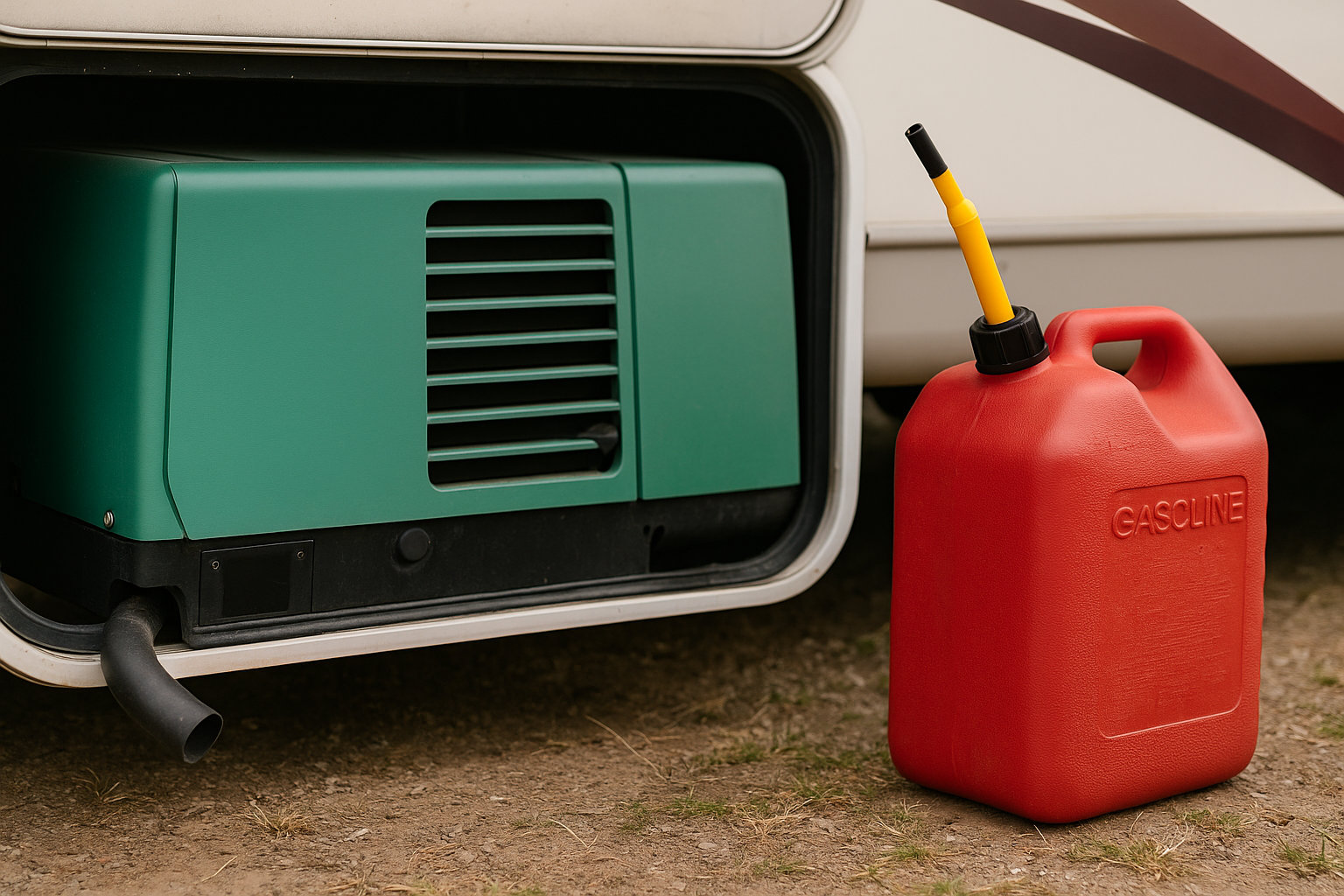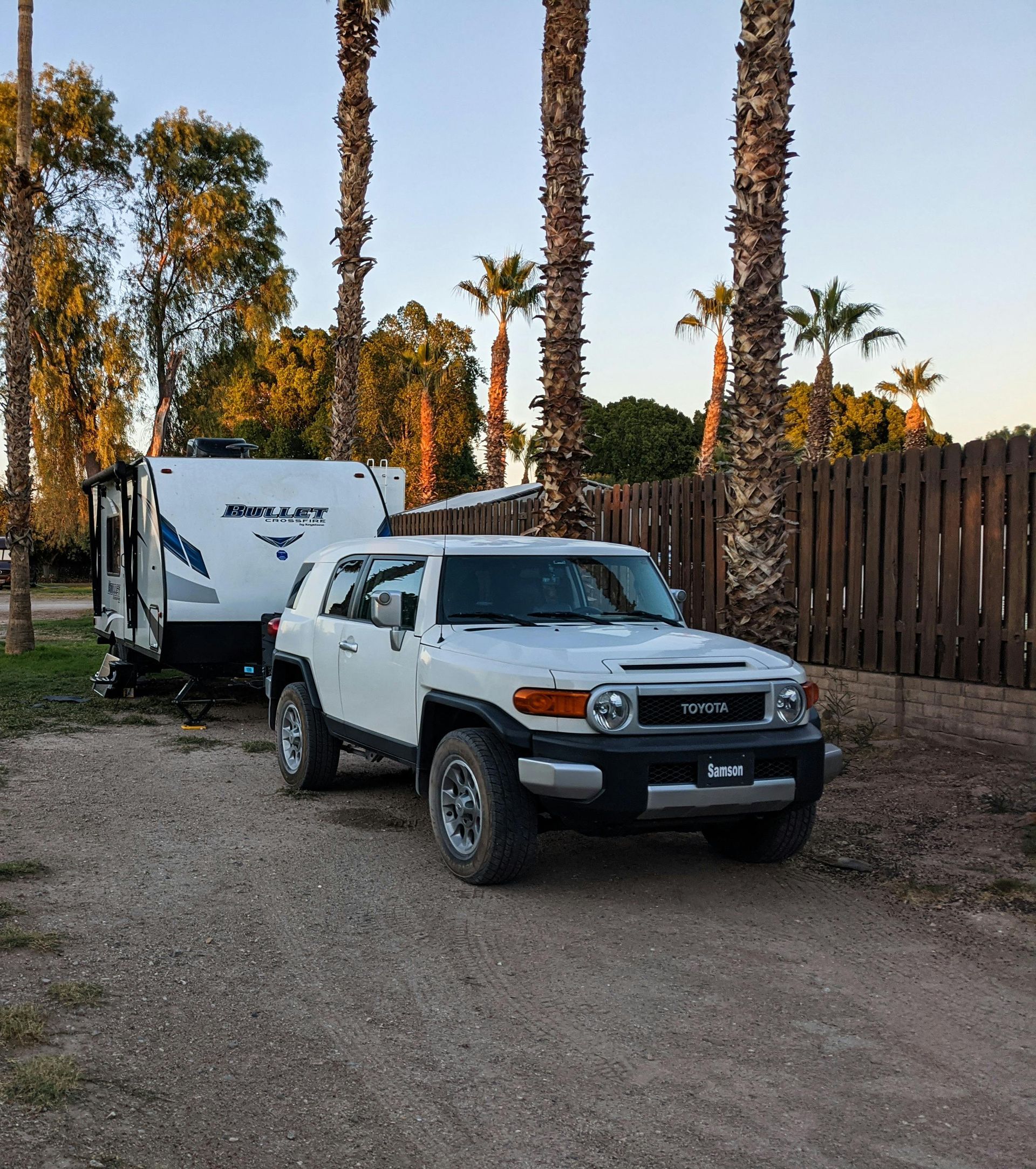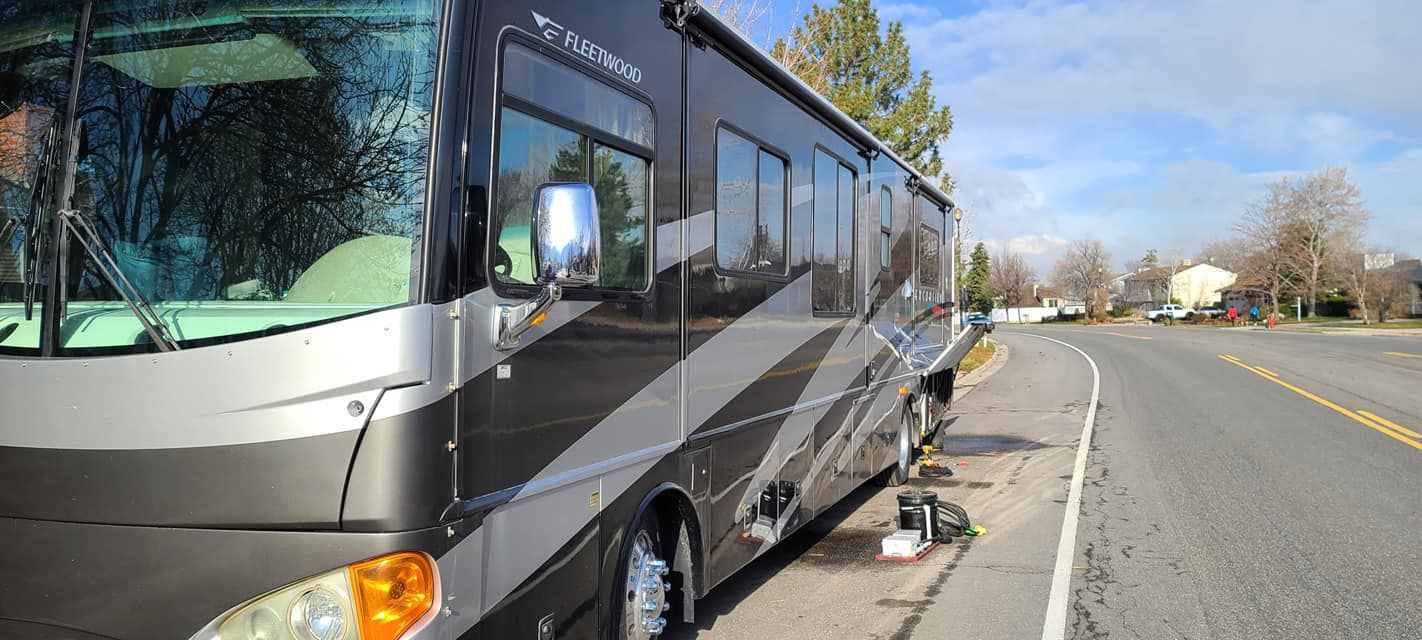The Damn Air Conditioner Doesnt Work!
“The damn air conditioner doesn’t work!” is a phrase that has caused many RV owners to use “RV” as the initialism of “Ruined vacation” instead of Recreational Vehicle
The hardware of chemical-refrigerant air conditioners like those on RVs is all pretty consistent. There’s an electric motor, a condenser, an exchanger, various AC control devices and probably a multi-station control system. The motor turns the condenser which condenses the refrigerant which the evaporator soon depressurized. When gas decompresses it switches from the gaseous state to the liquid state. This structural change carries the side benefit of absorbing heat. The cold gas is pumped through the exchanger coils. Warm air, boosted by the circulator fan, is passed over the cold coils cooling the air.
These major components rarely fail and are simple to test. With your power disconnected, see of you can turn the motor by hand. If you can, your problem is probably elsewhere. BE CAREFUL!! Spin the motor by grabbing in a place where your fingers won’t be crushed between the belt and pulley.
First rule for RVers who are reliant on their AC: Carry Capacitors! Watch a YouTube video on “How to discharge a capacitor.
Second rule: Know your unit
Third rule: Carry a backup AC of some sort, fans or some other way to stay cool. Some AC repairs require part shipment.
Unplug your shore power then go up, or send somebody up, on your RV to get your capacitor specs. The plastic AC cover must be removed. (Philips and 5/16 nut driver) There are two capacitors called “start” and “run.”
The job of capacitors is to hold a bit of power which they feed into the system to either get or keep the motor going.
When a motor is subjected to a load, it must work harder than any other time. It has to carry the full running load plus it must overcome the zero inertia of the load. In other words, it has to go from 0 movement to working at full capacity (1650 RPM at least) all in one very quick gulp. The power reserve in the “start” capacitor supplies the additional power necessary to supply this demand.
Power, especially from generators, is notoriously spikey and uneven. Viewed by an oscilloscope, it follows the sinus pattern but is very spiky. The spikes represent very short and sudden power variations. In an air conditioner, and any other capacitor motor (the vast majority are). These quick fluctuations are smoothed out by the “run” capacitor.
Remove your AC cover. Locate the capacitors and discharge them. Capacitor specs are measured in microfarads, written μF, and voltage. They are printed on the outer shell. Record these values and reassemble your AC. Get a replacement spare for both. Capacitance tests require a meter designed to measure it. Since you probably don’t have one, when you must replace one, replace both. They’re cheaper than you might expect. ~$10 on average on Amazon).
Record your unit’s make/model/serial number then reassemble.
Now, there are a number of troubleshooting tips and full diagnostic cycles available online and air conditioners seem to always have a great wiring diagram. So, these things are outside the scope of this writing and will be taken up later. This writing is more about the parts you may need to follow your tutorial’s instructions when the time comes.
Other than the capacitors there are a number of reasons for AC’s to act up. Another major one is the multi-zone and/or electronic control system. In general, these are a “change your schedule” breakdown. They are not standardized, constant failure points and are not assembled very well. Since carrying a spare isn’t reasonable, so If this is your problem the part may have to be ordered in requiring you to change your [travel] schedule.
There is a motherboard in them but in 15 years I’ve yet to see a bad one.
Most RV ACs can’t be recharged with refrigerants and even fewer mechanics offer recharge service. If your refrigerant pressure is down you’re probably looking at a replacement. Given that, with your capacitors and unit data you’ve set you trap for AC failures as well as you can for DIY or hired repair. Don’t forget, you’re manufacturer will be a great resource for the troubleshooting trail.
If your motor is seized you may be money ahead to fix it. If your condenser is seized, probably replace it.
The moral of the story: Carry capacitors, know the common problems and know your unit/model number.
Terry McAdoo
Wizard's Automotive & RV
Office:
801 / 994 6826
Cell:
307 / 413 6361






